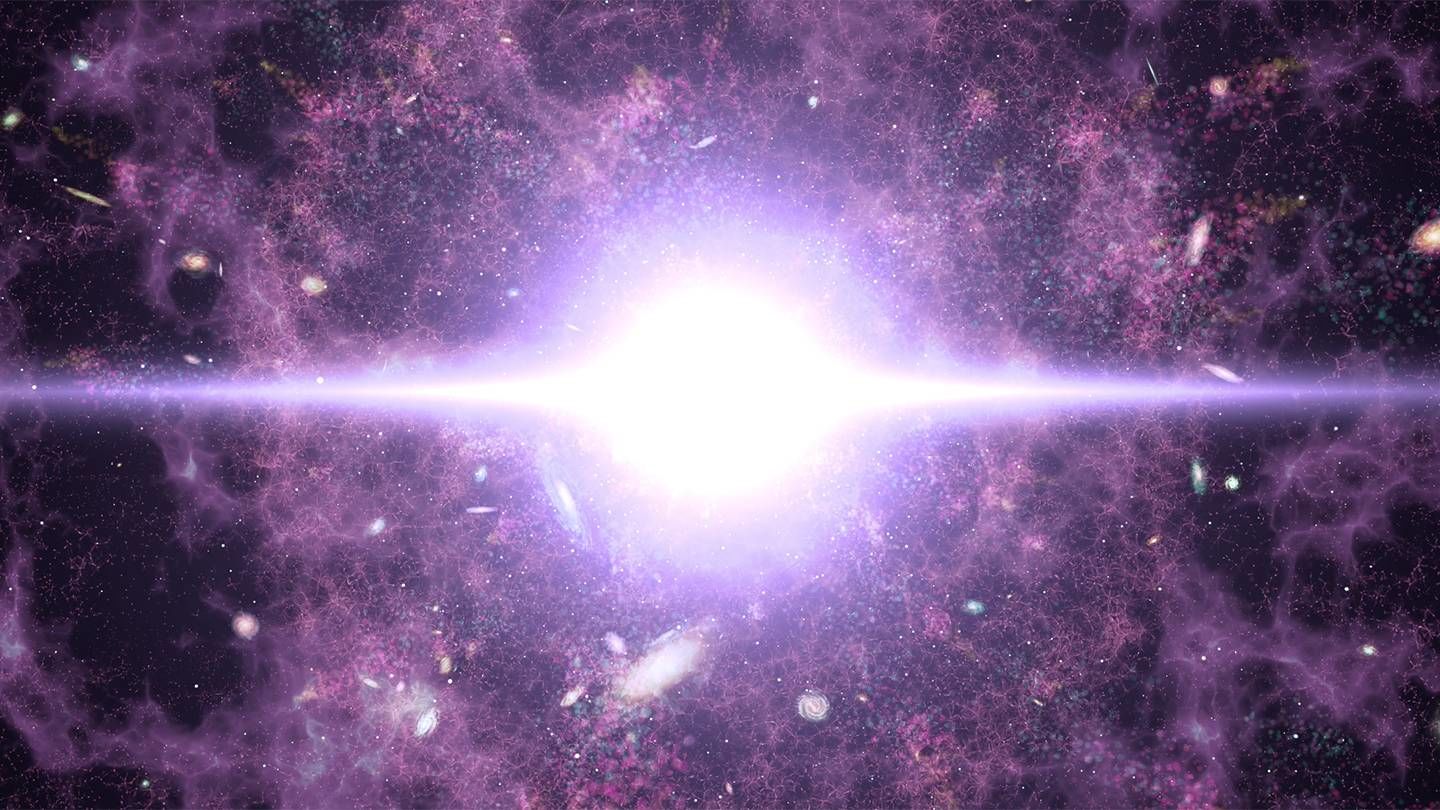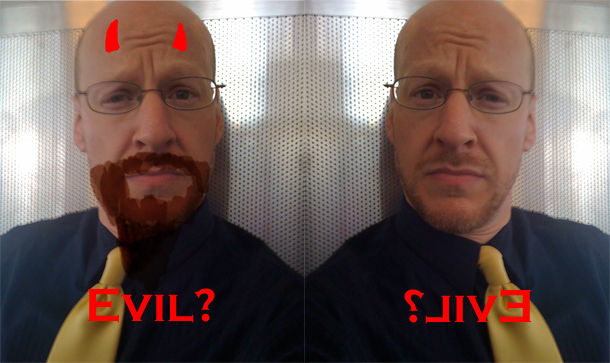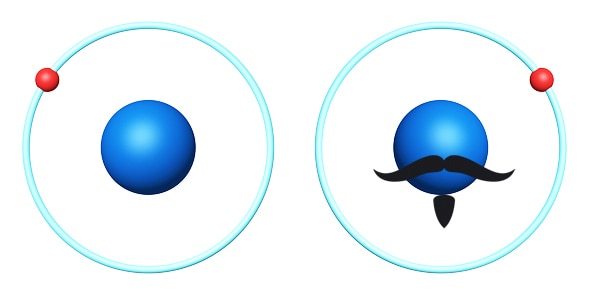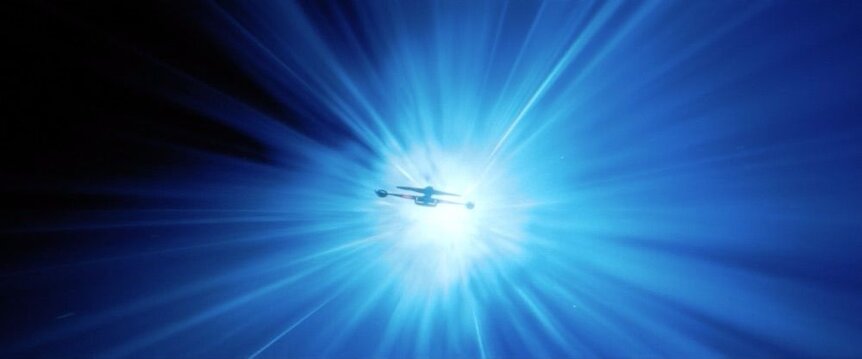Create a free profile to get unlimited access to exclusive videos, sweepstakes, and more!
Why is the Universe made of matter and not antimatter? New experiment gives a tantalizing hint.

Scientists shooting neutrinos through the Earth may have taken a decent step toward answering one of the most basic and aggravating questions the Universe has thrown at us: Why is everything made of matter and not antimatter?
Oh, you know the term antimatter. A staple of sci-fi, including Star Trek, it's the same as matter but with an opposite electric charge. So an anti-electron, called a positron, has all the exact same properties as an electron but has a positive electric charge instead of a negative one. An anti-proton is like a proton but with a negative charge, and so on.
Another fun property of antimatter is that if you take a particle and its antiparticle and bring them together, bang. Big, big bang: They convert in pure energy. A lot of energy. If I met anti-Phil and we decided to dance, we'd explode with the same energy as 3,500 one-megaton nukes.
And that's a problem (besides ruining a rave). You see, according to the laws of physics as we understand them, when the Universe was very young — just a few minutes old — and its temperature dropped enough as it expanded, it should have created equal amounts of matter and antimatter.
But if that were true, every particle would've met its antiparticle, and kablam. There shouldn't be any matter or antimatter at all in the cosmos. They'd all have annihilated. And yet here we are.
In reality the two weren't equal. For every billion or so pairs of matter/antimatter particles, there was one leftover matter particle. Not much, but enough to account for all the galaxies, stars, planets, people, and cups of Earl Grey tea we see today after all the other pairs annihilated.
But why? Why the asymmetry?
It must be that our laws of matter/antimatter symmetry are somehow violated, that antimatter is not exactly like matter in some way. But what?
Scientists have been searching for this asymmetry for a long time. The detailed physics is interesting — there's a fantastic explanation of this at the DAEδALUS experiment site — but you don't need it all to understand the next bit, which is what scientists are doing to find it.
OK, let's take a side trip here for a sec. There's another kind of subatomic particle called a neutrino. It has a lot of weird properties, like being able to pass through a lot of normal matter as if it's not there; it just doesn't interact with matter much. A teeny little bit, but not much. They also come in three different flavors, called muon, electron, and tau neutrinos. One kind of neutrino can spontaneously transform into another kind as it travels through space.
And the reason I'm mentioning them here is that when you go through the incredibly complex equations governing neutrinos and their antimatter equivalents, you find a hint that they might not act the same. There may indeed by an asymmetry there, so that's where scientists have concentrated their efforts.
And here's where we get to the very interesting part: Scientists with the T2K collaboration just announced they may have measured this symmetry violation in neutrinos. The results aren't rock solid, but they're very interesting.
The experiment involves creating a beam of muon neutrinos and firing it from the Japan Proton Accelerator Research Complex (JPARC) through the solid Earth 295 kilometers away to the Super-Kamiokande neutrino detector.
They do this by accelerating protons into a sample of carbon, which then spew out muon neutrinos in a beam that's aimed at Super-Kamiokande. When they get there a millisecond later (!!) a very, very few of these neutrinos will hit an atom in the 50,000 tons of supremely pure water stored in a tank and create a muon, yet another type of particle. Most neutrinos pass right through, though, which is why it's taken 20 years of slamming carbon with protons to get any results.
But some of them change flavor, becoming electron neutrinos in that short time before they get to the water tank. When that happens they hit the atoms in the tank and create an electron instead of a muon.
Also, JPARC can create muon antineutrinos as well. The same thing happens: Some make muons in the tank, and some change into electron antineutrinos and make electrons.
If matter/antimatter symmetry holds, then the ratio of muons to electrons generated by neutrinos should be the same as it is for antineutrinos. But what they found is that ratio appears to be different! Muon neutrinos seem to turn into electron neutrinos more than their antimatter counterparts do.
Very big, if true.
Do the laws of physics distinguish between matter and antimatter? This experiment hints that the answer is yes. The problem is it's not definitive. The gold standard is that, statistically, you have 99.7% confidence in a result (called the 5-sigma standard). This result has low numbers of results, giving a statistical certainty of "only" 95% (3 sigma). It's very provocative, but not concrete, and can't be called a discovery yet.
Oh, but it's soooo tantalizing.
In the fiendish equations that govern the neutrino behavior being test is a parameter called delta-CP; if there's a difference between matter and antimatter it's in that number. It can take on a lot of values in theory, but this experiment appears to exclude about half of them in practice. That narrows down just where scientists need to look in the equations to see how the Universe behaves, why it prefers matter over antimatter. A lot more work is needed, but these results seem to at least point in a direction to go, which is more than we had before.
And hey: Along the way of understanding just why the cosmos likes one kind of particle over another, we may figure out how to make one over the other. And then who knows where we'll be able to boldly go?





























